Ray McVay and His Orchestra – Come Dancing
Sleeve Notes:
When Ray McVay extends a cordial invitation to ‘Come Dancing’ then the scene is set for polished, musical entertainment that everyone can enjoy and appreciate.
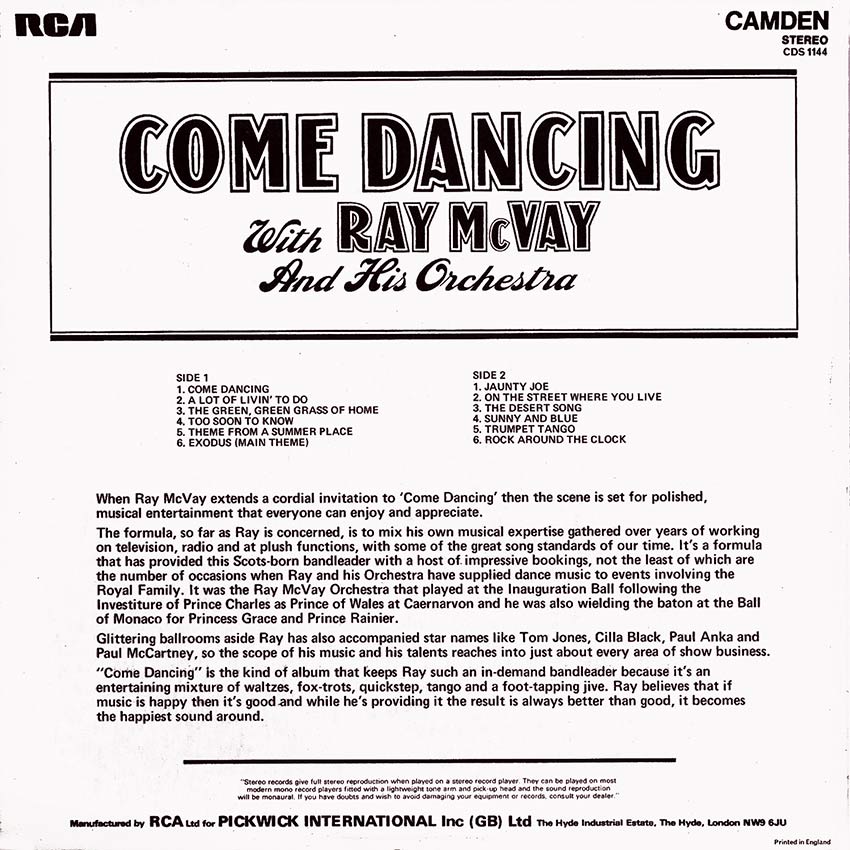
Label: Camden CDS 1144
When Ray McVay extends a cordial invitation to ‘Come Dancing’ then the scene is set for polished, musical entertainment that everyone can enjoy and appreciate.

Label: Camden CDS 1144
Audio Fidelity Records, originator of the world’s first stereophonic phonograph records (November, 1957), now proudly presents its unrivaled conception of a demonstration record for both the high fidelity industry and the stereo-minded public. In this highly entertaining and unusual record are contained a number of sounds and musical selections that are perfect examples of extraordinary stereophonic high fidelity.
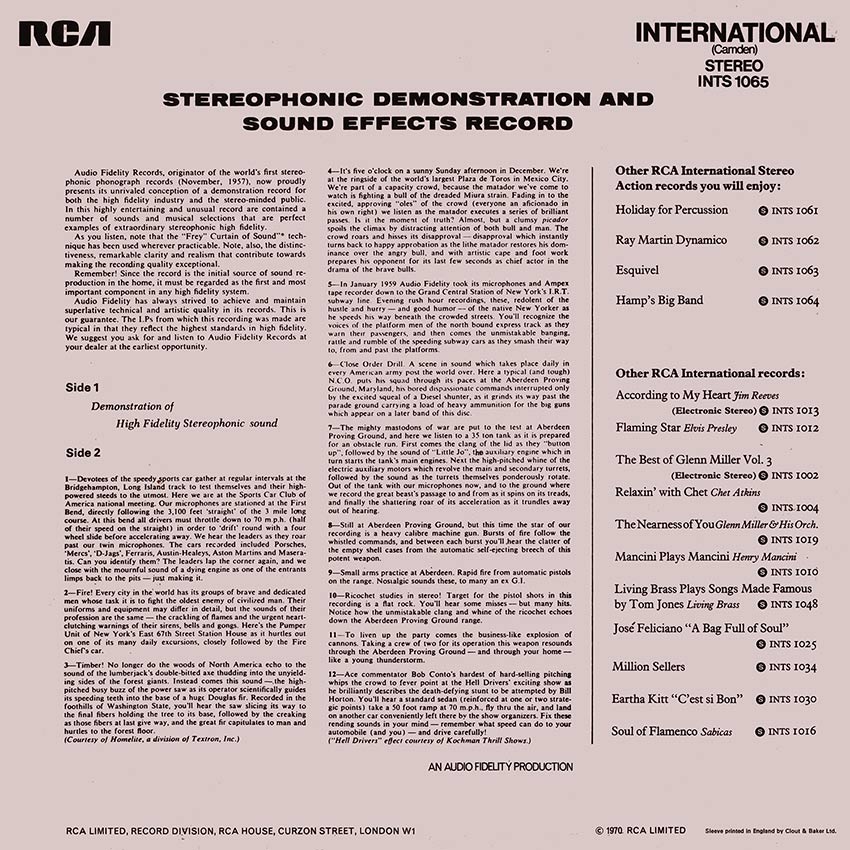
A sound effects record that shows off the wonder of stereophonic sound! Listen to the record and be amazed below!
Label: RCA International INTS 1065
Wendy King – born into Show Business! With her father a comedian and her mother a dancer it’s no wonder that she has inherited the personality, originality and vitality necessary for this exacting profession.
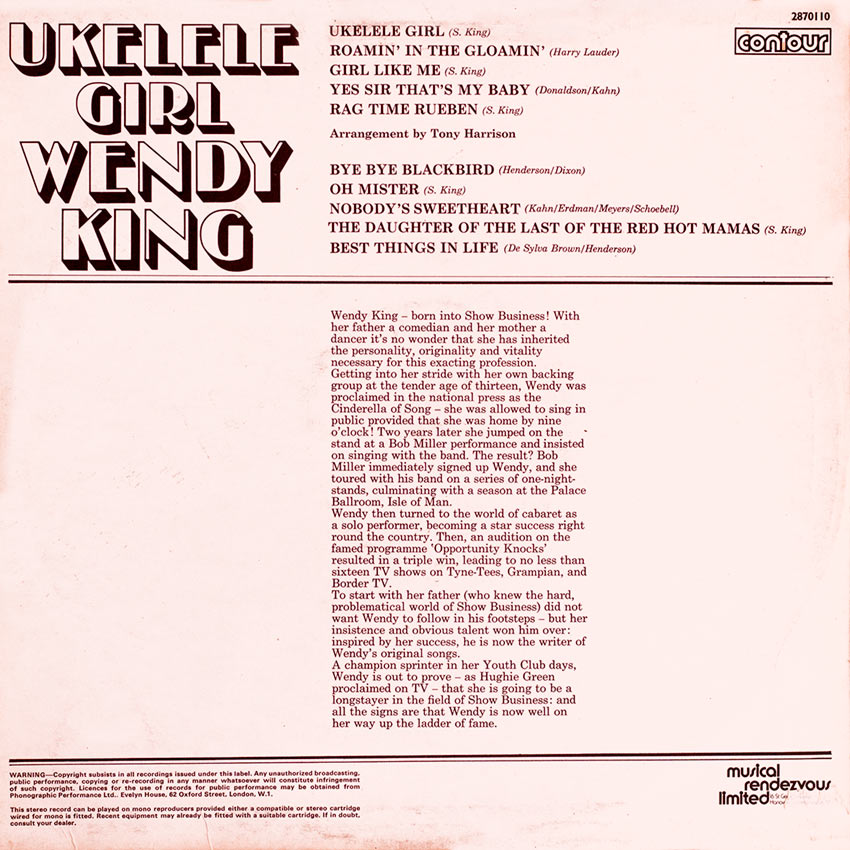
Label: Contour Records 2870110
Hello, Dolly, Milord, C’Est Magnifique, In A Little Spanish Town, Benita, Wheels. Sole, Sole, Sole. Ich Möcht’ So Gern Mit Dir Nach Hause Geh’n, Goody-Goody, True Love, Moon River, Letkiss, Norskejenka, America, If I Had A Hammer, Lucky Lips, Du, Du, Du, Blue Moon, Makin’ Whoopee, Cavaquinho, Cumana, Sambarita, Melancolía (Melancholie), La Mamma, Red Roses For A Blue Lady, Bye, Bye Blackbird, Auf Wiederseh’n Bei Dir
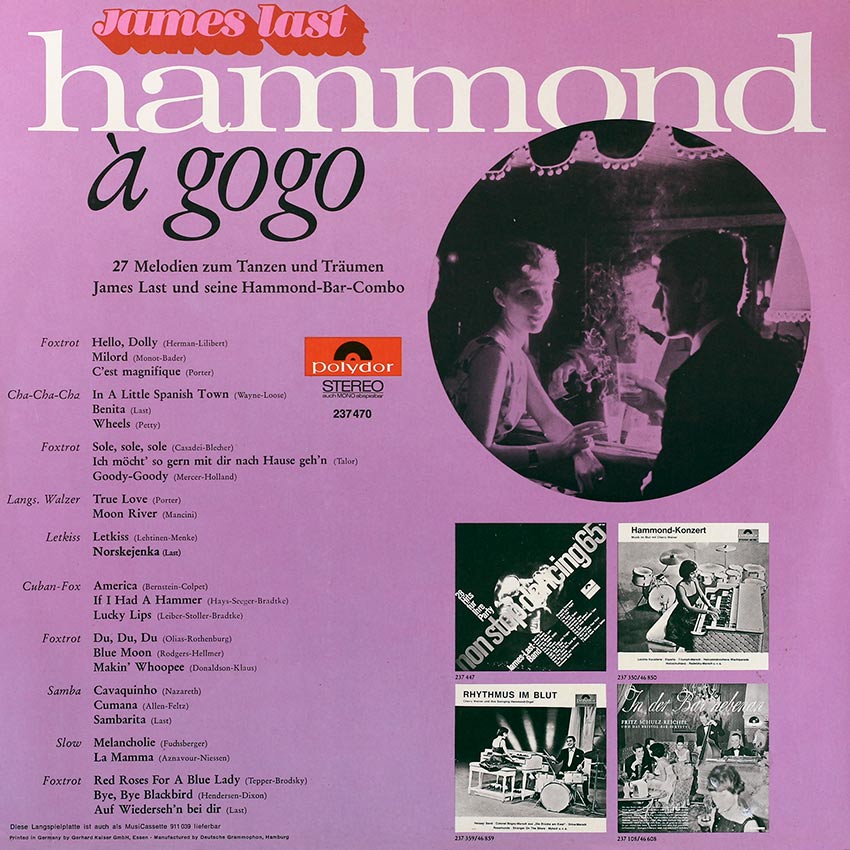
Label: Polydor 237 470
SWING LOW SWEET CHARIOT, LONG, LONG AGO, NOBODY KNOWS THE TROUBLE I’VE SEEN CAMPTOWN RACES, DOWN BY THE RIVERSIDE, CARRY ME BACK TO OLD VIRGINNY, LONDONDERRY AIR, GUANTANAMERA, GREENSLEEVES, WHEN THE SAINTS COME MARCHIN’ IN
BIG JIM H IS THE PARTY MASTER OF SWINGIN’ HAMMOND. HERE IS A PROGRAMME OF WELL-KNOWN MELODIES FROM BLUES TO POP STANDARDS-ALL DONE UP IN THAT SPECIAL KEYBOARD STYLE OF BIG JIM H.
RECORDED IN A REVOLUTIONARY STEREO MULTI-TRACK TECHNIQUE THE SOUND IS AS BIG AS A HOUSE – EVEN YOURS.
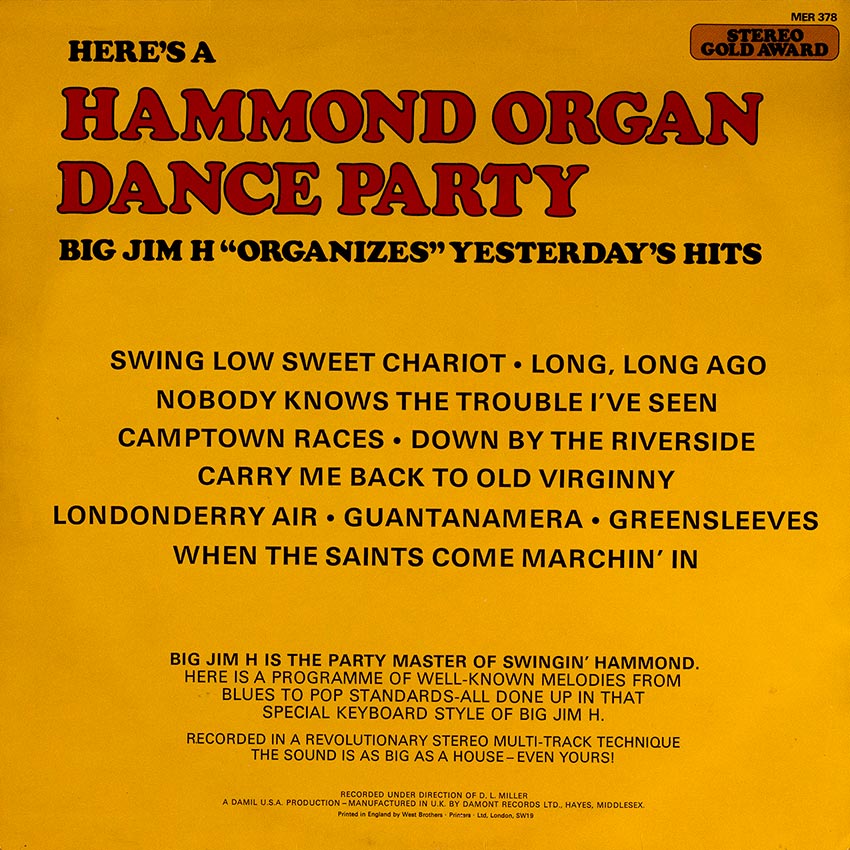
Label: Stereo Gold Award MER 378
Medley
a) Bring Me Sunshine
b) One Of Those Songs
c) Oh Babe What Would You Say
Theme From ‘Shaft’
Medley
a) Where Is The Love
b) I Don’t Know How To Love Him (From Jesus Christ Superstar)
Medley
a) Ooh Wakka Doo Wakka Day
b) Who Was It?
c) No Matter How I Try
d) My Guy
Medley
a) Sugar Me
b) Day By Day (From Godspell)
c) Seaside Shuffle
Music Hall Medley
a) Fall In And Follow Me
b) Let’s All Go Down The Strand
c) The Man Who Broke The Bank
d) I Do Like To Be Beside The Seaside
e) It’s A Bit Of A Ruin That Cromwell Knocked About A Bit
f) Don’t Dilly Dally On The Way
g) Show Me The Way To Go Home
The Good Old Bad Old Days (From The Show Of The Same Title)
Popcorn
Medley
a) Son Of My Father
b) The Locomotion
c) Jesus Christ Superstar (From Jesus Christ Superstar)
Amazing Grace
The Stripper
Barn Dance Medley
a) John Brown’s Body
b) Ten Green Bottles
c) Daddy Wouldn’t Buy Me A Bow Wow
d) Just A Wee Deoch An’ Doris
e) Loch Lomond
f) Auld Lang Syne
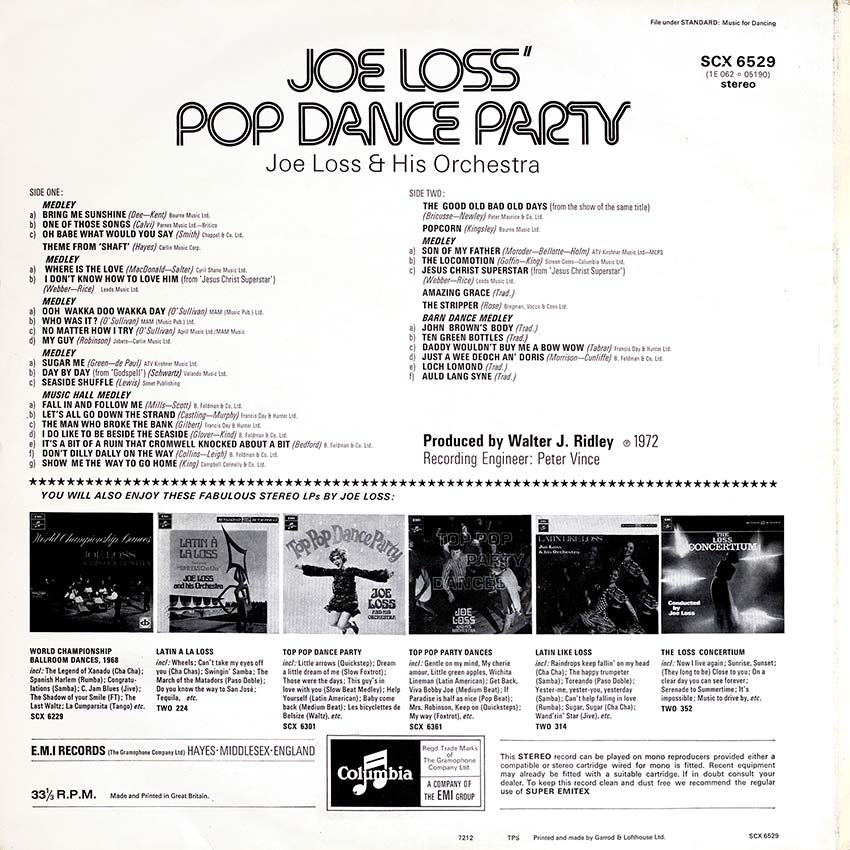
Label: Columbia SCX 6529
Fin De Semana – Sitamalobadudo, Historia De Amor – Love Story, A-Chi-Li-Pu, Adios Querida Luna, Salud, Amor Y Pesetas, Y Volvere, Va Cayendo Una Lagrima, Chirpy Chirpy, Chip Chip – Chirpy Chirpy, Cheep Cheep, Adios, Linda Candy – Adieu Jolie Candy, Un Rayo De Sol – Fernando, Señor Doctor, Maria Isabel

Label: Emidisc 1 J 048-50.434
Hava Nagila, Autumn Leaves, Tzena Tzena, Somewhere My Love, Czardas Monte, Zorba’s Dance, Never On A Sunday, Play Fiddle Play, La Paloma, Cuando Caliento El Sol, Almonds And Raisins, Spanish Eye
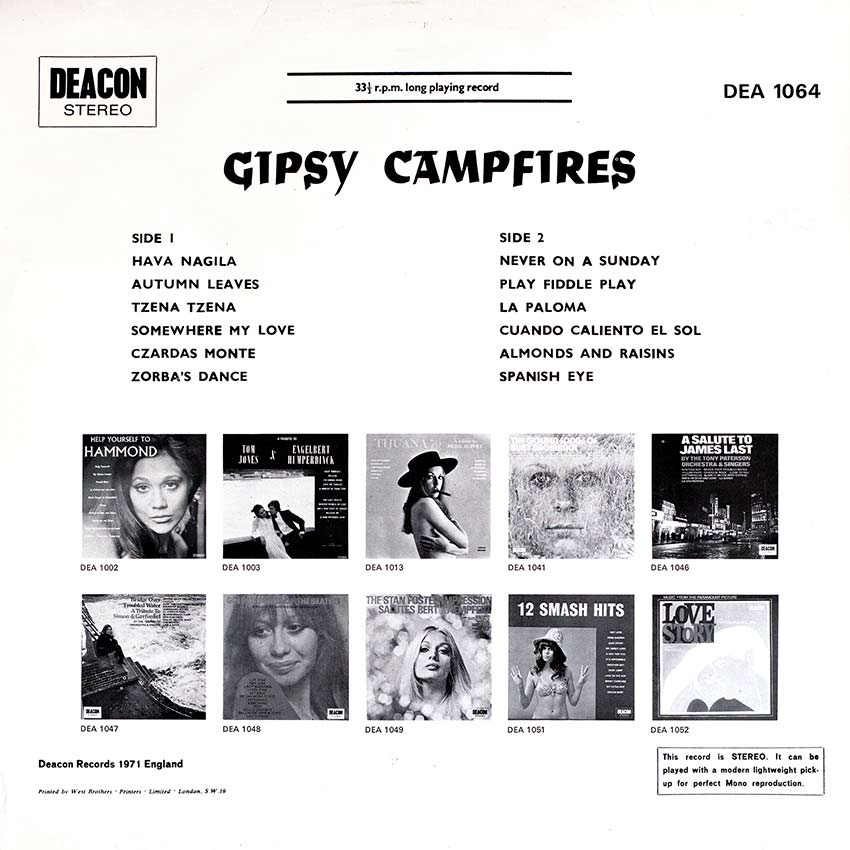
Label: Deacon Records DEA 1064
Un Poquito De Amor, Y Volvere, Seleccion Mexicana, Un Rayo De Sol, Melodias De Verano, Ob-La-Di, Ob-La-Da, Todo Lo Que Quiero, Pajaro Choqui, Extasis Tropical, Lupita, Voy Gritando, Vamos A Ver
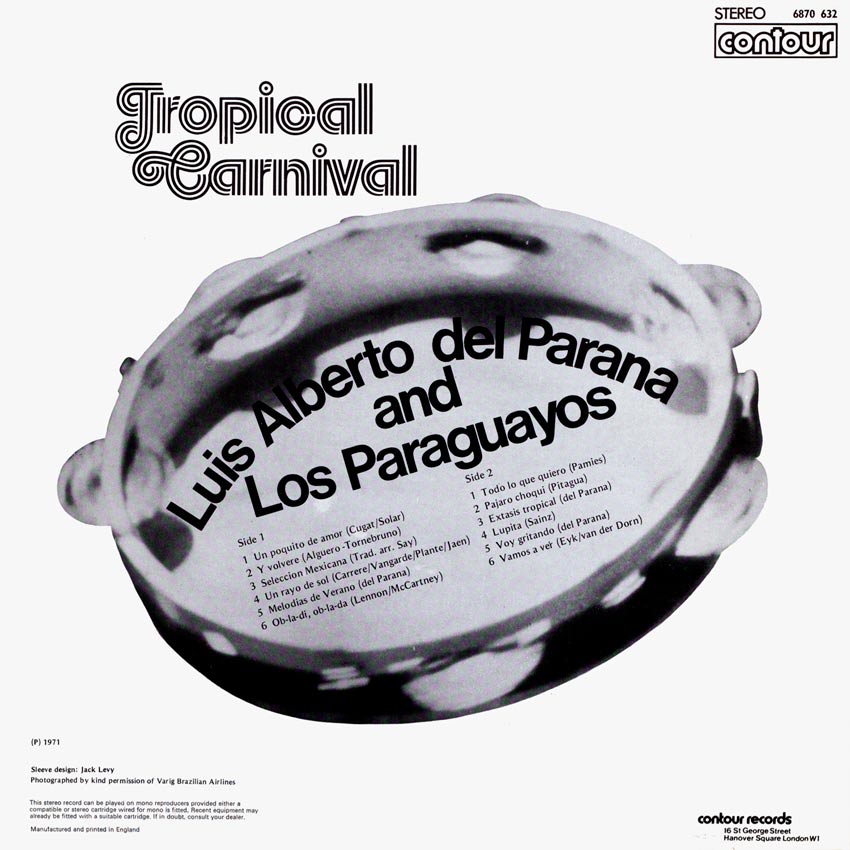
Label: Contour Records 6870 632
Sleeve Design: Jack Levy
Photographed by kind permission of Varig Brazilian Airlines
I Want To Be Happy, And I Love You So, Day By Day, Theme From ‘Love Story’, Cabaret, Manolet, You You You, Love Theme From ‘The Godfather’, Laia Ladaia, If, Everything’s Coming Up Roses, El Bravo

Label: Studio2stereo TWOX 1006